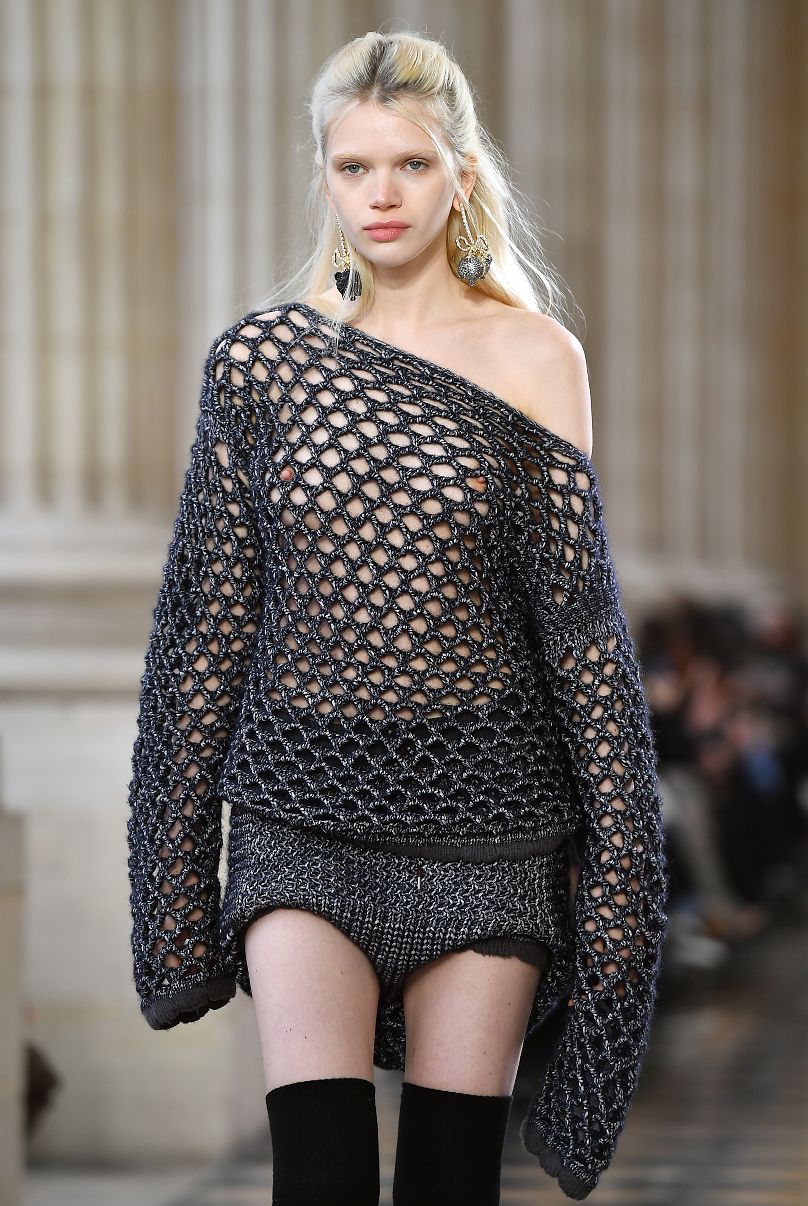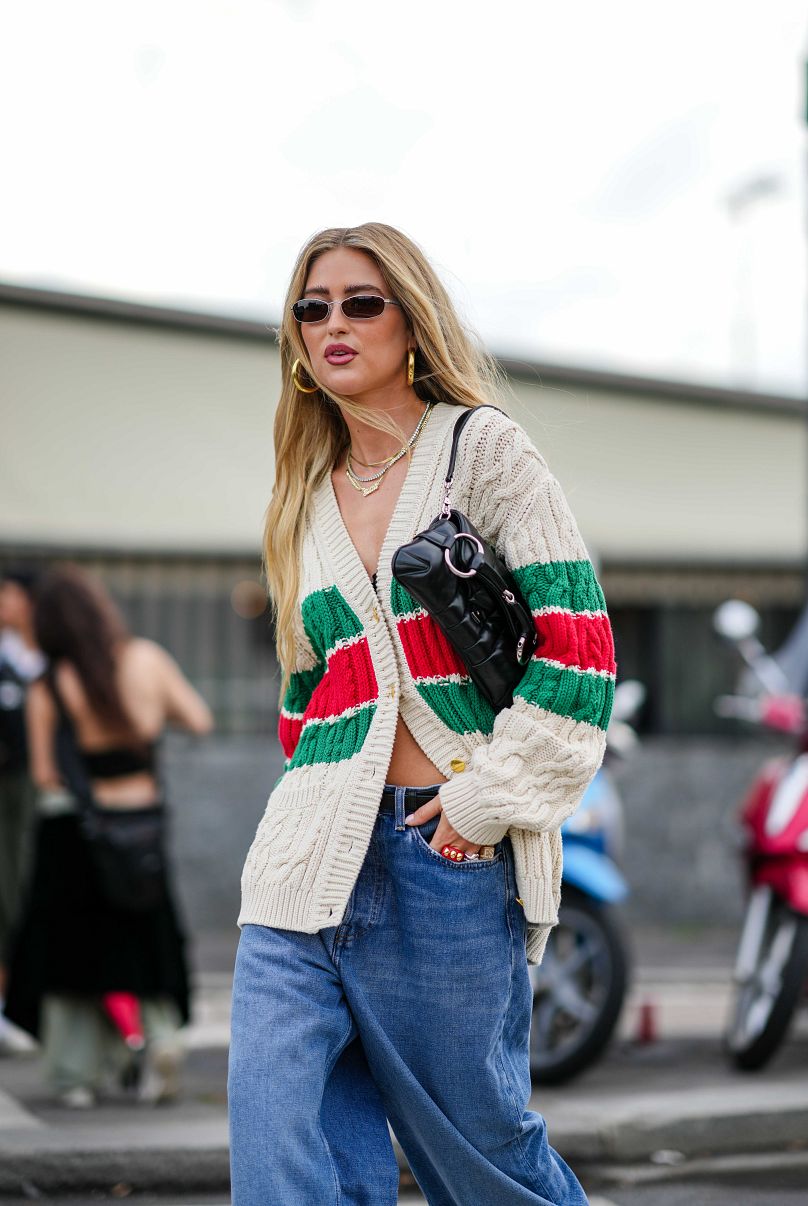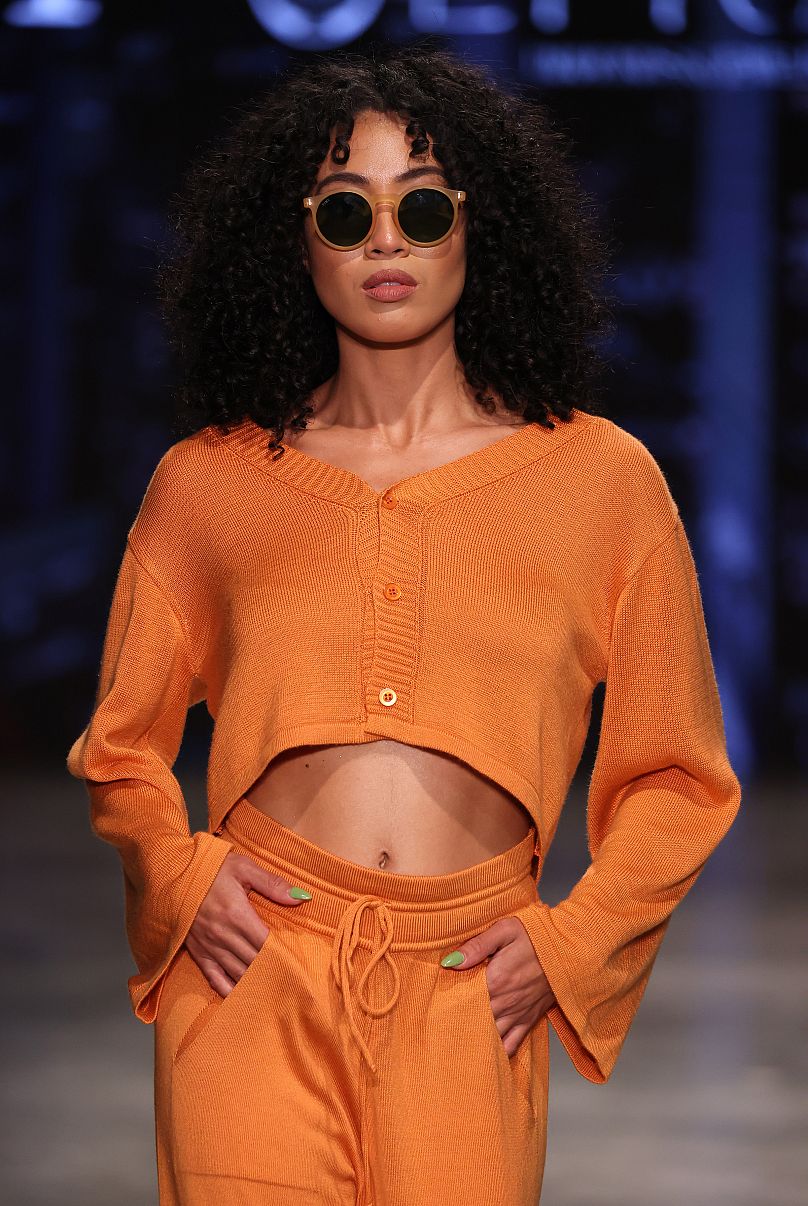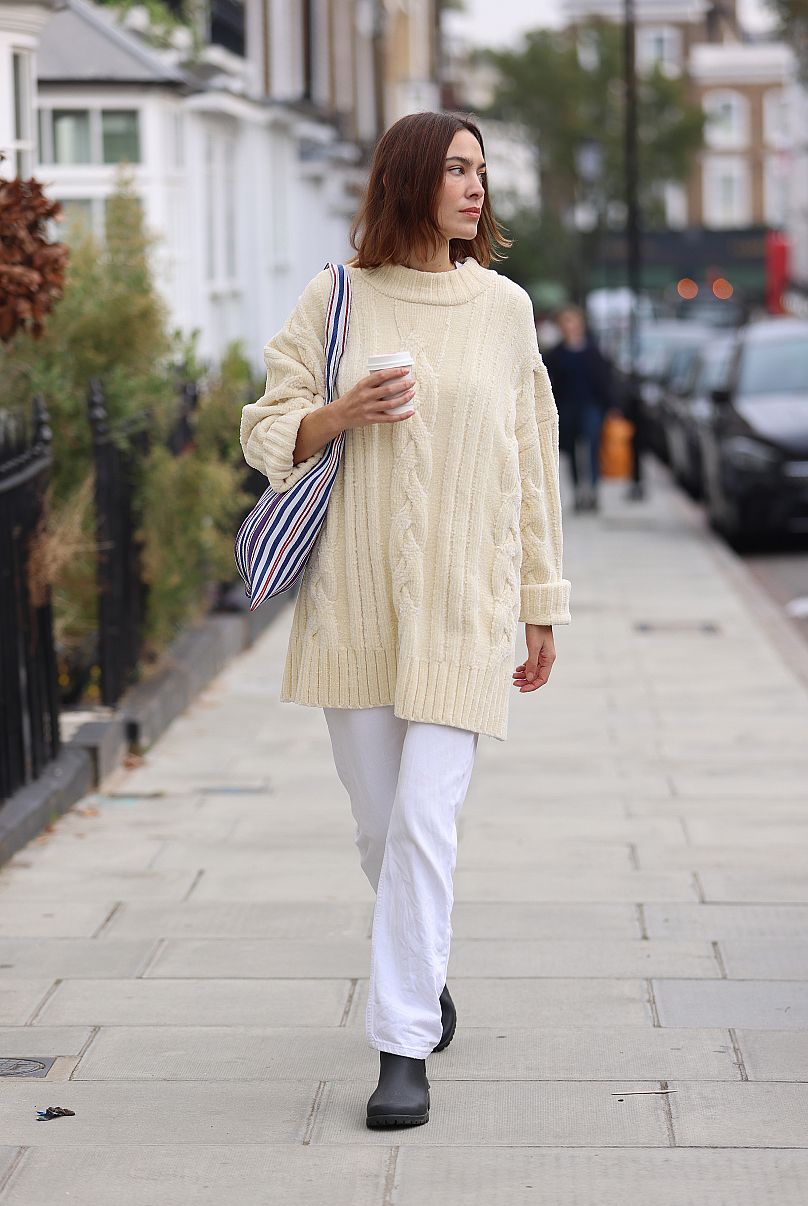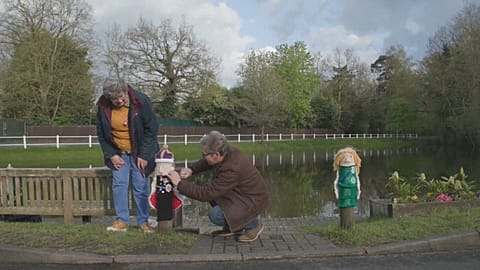As the climate crisis rages on and fast fashion brands are increasingly being attacked for their role in harming the planet, knitting is getting ever more popular - and some say it could contribute to slowing down global warming.
Over the weekend, Lyon was in the midst of a yarn frenzy as the French city paid host to a knitting festival.
Billed as “the perfect place to immerse yourself in the world of fabrics and yarns”, it may seem like a niche pursuit - but knitting is getting ever more popular across Europe.
With the climate crisis raging on and with the fashion industry being blamed in part for its worsening, many fashionistas are looking for alternatives.
Enter: knitting.
It’s a hobby that’s relatively easy to pick up and known to be addictive when you get the hang of it. Plus, it’s an extension of the ‘make do and mend’ ethos which people are getting on board with more and more.
Euronews Culture spoke to fashion experts to see where the uptick in knitting has come from, how it can help the climate - and how to get started.
A catwalk tradition
Whatever the season, you’ll likely see some form of knitwear on the runways of the four fashion capitals - London, New York, Paris and Milan.
Just last week, Italian luxury house Fendi sent models down the runway in various iterations of the fabric as part of their spring/summer 2024 collection - and they weren’t alone.
“The thing about knitted fabrics is that you don't need them to look absolutely perfect, there is beauty in the imperfections of a knit, just look at the new AW23 Vivienne Westwood collection,” fashion analyst Jennifer Walderdorff tells Euronews Culture.
That runway featured countless ‘undone’ pieces, including a distressed taupe jumper with a monkey motif from Westood’s spring 1993 collection printed on it - leaning into the idea that clothing shouldn’t be "wear once, throw away".
Milli Abrams, from Tribe Yarns, agrees - saying that the popularity of knitwear on the runway and as worn by celebrities is inspiring a lot of people.
“Knitting has commonly been branded as ‘old-fashioned’ and dated… However there has been a recent surge of celebrities and influencers promoting knitted fashion, which has resulted in a sharp U-turn for the popularity of the craft”, Abrams tells Euronews Culture. “Younger generations are now using knitting as a fun and trendy outlet to express themselves, by creating stylish and unique fashion looks on a budget”.
Can knitting really help the environment?
“Knitting is a slow process and each garment can take a long time, meaning that people making their own clothes will have a smaller, more curated wardrobe and are less likely to buy fast fashion items that they will not wear,” according to Raymond Lam, a fashion expert from Vendula London.
“Fast fashion clothing is usually not designed to last for very long, and sometimes the materials are not durable enough to be worth mending. By knitting their own clothes, makers are in control of what they use and can ensure that they are using high quality materials to guarantee the longevity of a garment," Lam continues.
“The fibres used for knitting are more often natural or natural blends, making them more sustainable than synthetic fabrics,” he says, adding that people who commit themselves to their knitting projects “have a sense of pride about wearing items that they have made themselves from scratch”.
As well as being far better fitting than cheaply made, mass produced off-the-rack clothing, many fashion fans who’ve taken up knitting say it’s a way to ensure they have a one-of-a-kind piece, tailored just to their style.
“Knitting is the ultimate craft for promoting sustainable fashion and fighting back against climate change. With more people creating fashion items themselves it in turn means there is less demand for fast fashion”, Milli Abrams explains.
The reason? “Knitting helps reduce greenhouse gas emissions by providing high quality and long lasting clothing pieces resulting in less disposable wardrobes… This warrants less need for multiple clothing pieces and rather a smaller wardrobe full of items that are loved”, Abrams adds.
Can just anyone start knitting?
At a time when we’re all chronically online, the prospect of putting down our smartphones and picking up a pair of knitting needles may seem daunting.
Abrams says that doesn’t have to be the case and, in actual fact, the internet can be a useful tool in getting cracking with your first ever knitting project.
“With the influx of online knitting tutorials, taking up the craft has never been easier. Sites like TikTok and YouTube have an abundance of step-by-step tutorials that are easy to understand and can be accessed from anywhere”, she says.
If you're less addicted to the internet, there are also a number of offline ways to get started on the knitting path.
Despite the decline of the high street, many towns will still be home to at least one craft store, likely to sell a beginners’ kit - as well as provide helpful advice via the owners.
For those keen to socialise while knitting, the prevalence of local knitting groups are also on the rise.
At these events, knitters of all ages can come together to improve their skills, get support from more proficient crafters and share their woolly pride and joys with the group.
Even if you’re more of a lone wolf, offline kind of knitter, the task can actually be good for your health.
“We live in a time driven by tech-led social interactions and digital distractions which leave us fatigued and overwhelmed, but knitting has become a source of respite that people are turning to due to its therapeutic benefits and repetitive yet mindful nature,” Insights Editor at Canvas8 J'Nae Phillips explains.
Evidently, the practice of knitting a simple scarf is miles apart from crafting an entire jumper complete with complex intarsia designs - but that doesn’t mean you should give up if it doesn’t immediately seem that you’re ‘any good’ at the technique.
Jennifer Walderdorff advises new knitters to persevere: “It can take years to gain advanced knitting techniques, but not long at all to get it going with scarves, and hats - necessities of a winter in Europe”, she says.
“In a time when the carbon footprint of fast fashion is ever more transparent and there’s an increased cost of living across the continent, knitting and sewing one's own garments is not only a trendy way to be original, stand out and set yourself apart as a person, it is also a means to a more economical end - especially as ‘winter is coming’!” Walderdorff adds.
As the leaves begin to fall, it seems as if it’s time to break out those knitting needles and balls of yarn for a truly unique wardrobe this coming season.
















